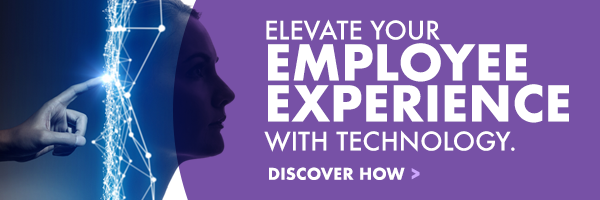3 Ways Activity-Based Working Can Bring Your Failed Open Office Back to Life


So, your organization adopted an open office environment. Why wouldn’t you? It touted the promise of eliminating wasted space, increasing collaboration and sparking creativity. You weren’t alone, nearly 70 percent of U.S. offices are now open concept. While your intentions were pure, happiness surely deflated once the now infamous open-office issues surfaced.
Clearly privacy and noise are two obvious problems, but these other problems pop up in open environments too:
- It raises the “proxemics issue“, as workers report feeling uncomfortable when they’re forces into close proximity with other people.
- People are twice as likely to get sick from a coworker in an open office.
- The average employee is 15 percent less productive than when working in a private space.
What’s a workplace leader to do? Before you contemplate bringing back the cubicles, here are three reasons considering an activity-based work environment could be a better fit, and just might breathe back life into your open office.
What is Activity-Based Working?
The term was coined by Erik Veldhoen, a Dutch consultant and the author, The Demise of the Office.
An activity-based workplace is a flexible office environment where the “workspace provides employees with a variety of predetermined activity areas that allow them to conduct specific tasks including learning, focusing, collaborating and socialising.”
What Does Activity-Based Working Do?
Supports Workforce Movement
Think about your typical day. No two are just alike. You may have a 9am meeting in a conference room, followed by a few phone calls at 10am to potential investors, then at 12pm lunch comes around where you watch a webinar online, then you need to write proposals for your calls from earlier with a colleague around 2pm, and the remainder of your day you catch up on email. In an open office you pretty much have two options to do your work:
- the conference room
- your desk
This really limits your creativity and your ability to tailor your environment to your task. In an activity-based workspace your day could be structured like this:
- 9am: meeting in the conference room
- 10am: investor conversations in a call booth
- 12pm: webinar lunch at your desk
- 2pm: drafting proposals in a huddle space
- 4pm: catch up on email at your desk
While this is a simplified example of a workday, it shows how activity-based working(ABW) moves with the worker, and gives them the option to choose the optimal workspace for whatever their preference might be. Maybe they write best in silence, and a call booth is best for that. Or maybe they prefer a little background noise, so working at a huddle space sparks their creativity.
Utilizes Space Efficiently
One of the main reasons many organizations adopted open offices was their promise of saving valuable real estate, which can be one of a company’s largest expenses. Removing walls and private spaces opened up lots of room for rows of desks, there was only one problem. Employees only spend 35-45 percent of their time at a desk. If your entire office is only lined wall-to-wall with desks, that’s a lot of wasted time and space!
While the desks don’t have to all go away, maybe your organization doesn’t need as many as you thought. After all, some of your team probably works remotely some of the time, and many employees spend hours in meetings, prefer to take work calls while walking outside or are offsite visiting clients. By adopting ABW plus incorporating a workplace technology like room reservation, you can allow employees the option of reserving a desk for the day if they need one. Over time you’ll see what types of spaces are used most, and make adjustments accordingly. Your workspace will be ideally optimized for serving the needs of the workforce.
Allows For Autonomy
One of the lesser known benefits of adopting ABW is how it makes your employees feel. If you give them a desk you’re saying, ” here is where you need to get your work done.” As adults, this can be mentally limiting. Everyone works best in a different environment, and assuming they all want to work at a desk in front of everyone isn’t the most supportive approach.
Trusting employees and providing them with the choice of where they want to complete certain tasks gives them a feeling of ownership, satisfaction and control of their work. According to Steelcase’s study, nearly 88 percent of highly satisfied employees work at a company where they have the freedom to move around the office during the day.
The open office may have flopped, but it doesn’t have to be that way. By making simple changes like adopting workplace technology and crafting workspaces that support the workforce and give them control as to where to complete their tasks, the perfect workplace is just within our reach.
